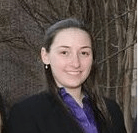
By KERRY WORTHINGTON
Rain or shine, a crowd of energy professionals were on cloud nine at the “Building a Responsive Energy Infrastructure for the Future” event on August 20, 2015 at the American Public Power Association (APPA) office in Crystal City, VA. Just in time for hurricane season, Leaders in Energy, APPA, and Business Radar put together an expert panel on weather and energy infrastructure interactions, progress in modeling both weather and infrastructure reliability, post-storm response in both clean up and infrastructure investments, and the job market in the utilities sector.
In her opening remarks, Janine Finnell, Founder and Clean Energy Ambassador of Leaders in Energy, spoke to all the “power house talent” in the room! She gave a special thanks to Sue Kelly, President and CEO of the American Public Power Association, and moderator Carla Fleming, Chief Marketing Officer, Leaders in Energy. The panelists included:
- Christopher Strong, Warning Coordination Meteorologist (WCM) for the National Weather Service Baltimore/Washington Forecast Office, National Weather Service
- Michael Hyland, Senior Vice President, Engineering Services, APPA
- Carolyn Slaughter, Director of Environmental Policy, APPA
- Deepak Swamy, Founder and CEO, Business Radar
A variety of sectors and professions were represented in the audience; all interested in a responsive energy infrastructure.
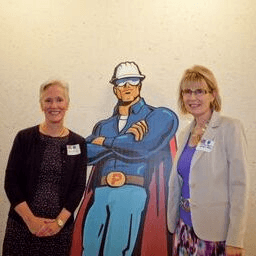
The relationship between energy infrastructure and weather has complex consequences across the nation. Professionals still talk about lessons learned from disasters in recent years and how they will prepare for the next one, but it hits close to home as well: the 2012 Derecho storm was memorable for Washingtonians, especially those like Janine who were out of power for five or more days. These significant events have propelled many professionals into this industry to understand the weather-energy relationship better, develop more advanced weather and energy models and systems, and get the power back on.
The panel was brought together to address key indicators that should tell decision makers that something needs to change; business as usual should not continue. Planning the future includes all disciplines from meteorologists to technical engineers to policy professionals. It is networking organizations like Leaders in Energy that can bring a diverse group of professionals together to address the issues holistically at the local, regional, and national levels.
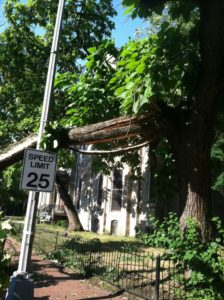
Carla gave astonishing figures for the impact of weather on infrastructure. From droughts to hurricanes to snowstorms, weather events have made communities, governments, and utilities rethink reliability, resilience, and post-storm clean up. Storm cleanup has taken the spotlight recently due to the $50 billion in expenditures after Hurricane Sandy and the $108 billion after Katrina, the costliest in U.S. history, – not to mention the lives lost and other damage.

Connecting National Weather Information to Local Communities and Utilities
Carla introduced Chris Strong of the National Weather Service (NWS). NWS is part of the umbrella organization National Oceanic and Atmospheric Administration in the US Department of Commerce.
One of the purposes of NWS is to alert the utilities and emergency response professionals to inclement weather. The NWS has state of the art technology including super computers, networks, and satellite structures that help the NWS to forecast the weather 14 days out, improving accuracy the closer in the storm gets. Although the improvements may seem negligible, the models and technologies the NWS employs improve on a daily basis, has resulted in improvements over time.
Additionally, Chris noted that meteorology is still a young science that is not only attempting to forecast the next few hours of weather, but also to predict the severity of storms 50-100 years from now.
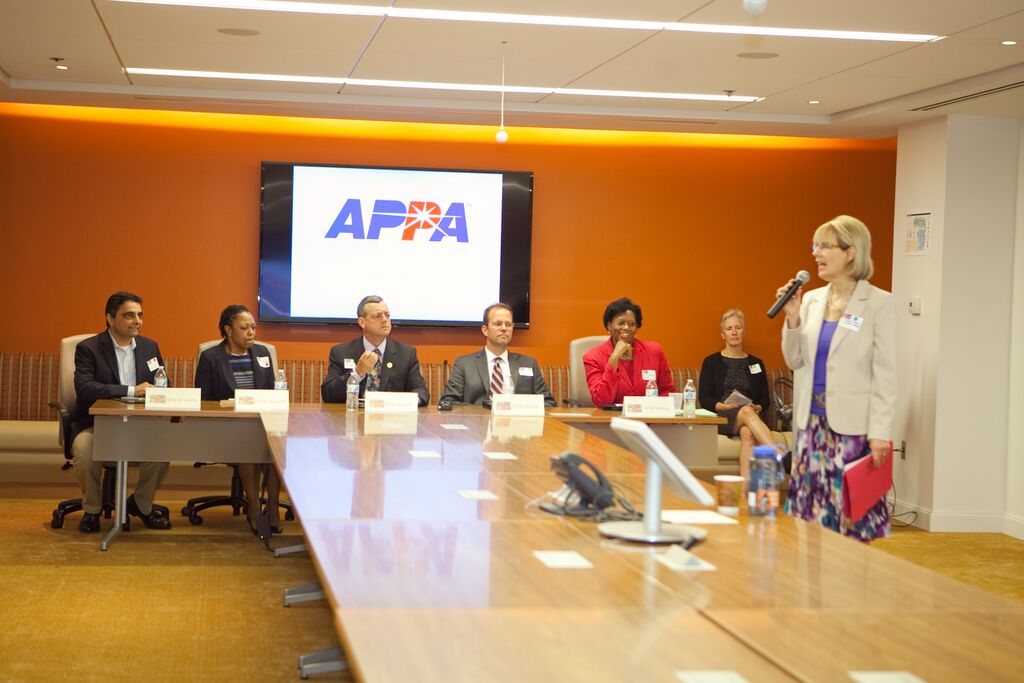
Before moving on to Mike Hyland, Carla noted that northeastern states including New York, Massachusetts, Connecticut, and New Jersey have or plan to invest $228 million in microgrid infrastructure to improve reliability and resilience. Other states are also making investments, and the industry is realizing that microgrids are not just for hospitals and universities anymore. “How do we protect the infrastructure?” and “what is the impact on the public utility?” she asked Michael.
Unlike most other industries, 99% of the time, electric utilities are on, Michael began. Resilience is a utility’s ability to snap back after a power outage. Mutual aid, an agreement to lend assistance to utilities in need of human and equipment resources, has been in place since the Galveston, TX storm of 1900. Engineers continue to develop more accurate modeling for outages and other metrics.
Currently, reliability metrics such as IEEE-P1366, SAIDI, and CAIDI are standard, and engineers continue to develop more accurate modeling for outages, metrics, and measurements. For example, the U.S Department of Energy (DOE) and National Labs have been developing a distribution resiliency tool, Michael reports.
“The term “smart grid” has become an enabler for all things distribution, metering, and consumer devices,” which is good news for microgrids, Michael says. However, misconceptions need to be cleared up about microgrids. Currently, through Michael’s experience with public power utilities, the concept is for portions of the grid to be able to disconnect, supply themselves power, and reconnect – not disconnect completely.
He was frank in pointing out that where there is a push for a technology, to “follow the money.” The public, investors, utilities and policy makers need to be kept up to date on proven technologies. Additionally, public power inherently has an interface with its customers – and the utilities need to be tuned in to their needs, wants, choices, and changes in preferences. A major concern is adding cost to low-income housing at this time.
On the Horizon
Carla introduced Carolyn, who was there to talk about work force challenges and opportunities, including how to meet the demand for more energy jobs and overcome the “brain drain” of professionals at retirement age. Continuing from Carla’s remarks, Carolyn opened by stating that in 5-7 years, there will be a significant retirement of all disciplines, but especially those with analytical skill sets.
The industry will need to provide more opportunities for knowledge transfer and succession planning. The community of public power professionals is smaller than the co-op or investor owned utilities, such as local power utilities Pepco, Dominion Power, or BGE. Hence, APPA implements programs to encourage research and development in the public power space, such as the Demonstration of Energy & Efficiency Developments (DEED) program. Other, broader, issues that public power professionals work with include environmental concerns, generation ownership, and cost allocation.
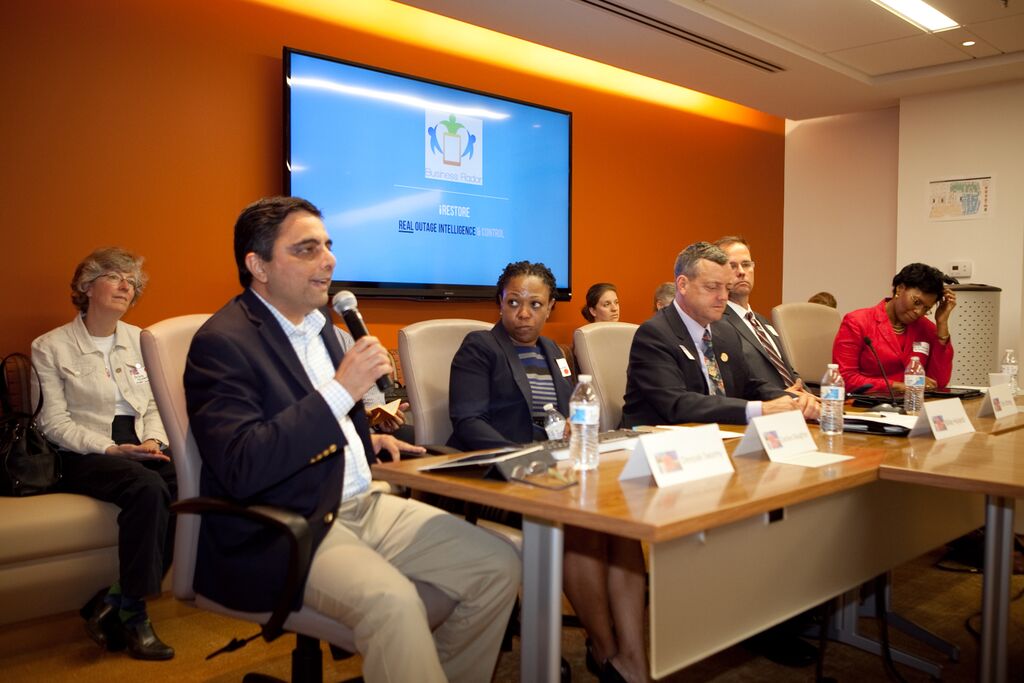
Information Technologies to respond to power restoration needs
Transitioning to Deepak, Carla mentioned that no storm is the same in terms of customer outage and the utilities’ response. The industry is using information technology to help manage the outage, improve data from the scene, and data from the customer. With technologies like the one that Deepak has developed, utilities not only have improved information about a line or pole down, but they can synergize crowd sourcing technology and big data with first response and stakeholder engagement.
Business Radar, through its iRestore solution, aims to resolve utilities’ difficulties in restoring power. It can be challenging for utilities, using only second hand information, to pinpoint, prioritize, and properly staff issues with the most appropriate people and equipment.
Deepak walked the audience through how a wire or pole down is typically reported to a utility and how power is restored:
- Someone calls 911.
- 80% of the time a firefighter responds and assesses the situation.
- The first responder describes the incident to their dispatcher.
- The dispatcher describes it to the utility.
- From that second-hand information, the utility prioritizes the issues, identifies what is involved, and manages the restoration.
Business Radar began with a pilot iRestore program with National Grid in New England. After a 20 minute training of the first responders and with three touches of their smart phones, the utility receives direct information on the type of issue, including pictures and GPS locations.
iRestore, Business Radar’s mobile platform and intelligent assistant helps utility workers restore power more rapidly during an emergency power outage. Additionally, with the iRestore program, the utility can use social media and other crowd sources – things that are usually used for customer service – to layer the data on GIS, which helps prioritize and assess the damage.
Some members may have recognized Deepak from the Leaders in Energy and Potential Energy DC May 2015 event, Energy Technology Petting Zoo.
Wrapping it up like a Twister
Before the questions from the audience began, Carla asked Carolyn, who is the Director for Environmental Policy at APPA, to describe the status of the Clean Power Plan. Carolyn noted that there are thousands of pages of documents in the plan, which is a key element of the President’s goal to reduce carbon dioxide emissions by 30% by 2030. The plan affects coal, gas, and renewables, as the state targets have been identified through heat rate improvements at coal plants, dispatch switching to natural gas, and an incentive for renewable energy. Public power utilities will be working in all aspects of the plan, including working with state officials. Due to weather uncertainty, focusing on maintaining reliability of the grid will be important and is included in the plan.
During the Q & A session audience members engaged with the panelists on all topics including the GIS layering capabilities, community involvement, encouraging young engineers to pursue energy. Questions also covered how we as citizens should consider responding to other disasters, such as solar flares, and the role of sensors in highways and at schools in helping NWS predict weather changes. After the panel, the event concluded with a bang, as participants mingled and networked over pizza and beverages until the closing of the program.
All photos courtesy of Agustin N. Cruz.


Leave a Reply